No, I haven’t lost my mind.
Or perhaps I have. Maybe I have found my true calling as a polenta hat top model. I surely know how to rock a polenta hat, even if I am otherwise sorely lacking in the style department.
Yesterday we were making polenta with Nonna Rita, my friend Cinzia’s 80 year old grandmother. We all gathered around the cracked cast iron woodstove in the basement kitchen that is common to many of these old Alpine houses, and Nonna Rita taught us her method of preparing polenta.
For those who grew up eating polenta for every meal, the polenta isn’t much to get excited about, but the crunchy crust that forms around the pot is a special treat that everyone looks forward to. When you get a good crust formed around the pot, it means that nothing is thrown away, and the pot is left clean. Most importantly, the crust is a crunchy and delicious treat that everyone clamors after. Imagine a thick and crunchy corn chip that tastes like freshly milled wholegrain corn, lightly smoked from the fire.
How do you get this special treat? If you don’t have a neighbor who will let you break polenta off of their crusty pot, there is a method for cooking polenta that will ensure a crispy crust. Most important is the pot; you need something with radiant heat. A cast iron or copper pot is best, but a thick (at least 5 mm) aluminum pot works nicely as well. Stainless steel will absolutely not work. Sorry. The polenta will burn without ever forming a crust. You also need to cook it over a fire. If you have a little wood cookstove that has removable rings that will let you set your pot down into the fire, that is best, otherwise you can rig something up over a camp fire. Using either method, you want a steady and low fire while you cook.
Follow your usual method for making polenta (or follow my instructions here), making sure that when you stir the polenta that you always go in the same direction, or the crust will fall off the sides of the pot. After you have your polenta whisked into the water, you’ll want to give the polenta a stir only occasionally until you see a crust starting to form around the edges. After about an hour of cooking your polenta should be done…. you should have a gorgeous thick crust of dried polenta coating the pot, and the polenta should want to pull away from the side of the pot. Carefully pour your polenta onto a wooden platter. You can either wait a few hours/days/weeks to eat the crust, or you can put the pot back on the fire for about 10 minutes to dry out the polenta crust. Once the pot is cool, take the polenta crust out of the pot. At this point you can either break off polenta crackers to eat, or wear it like a hat. We did both!

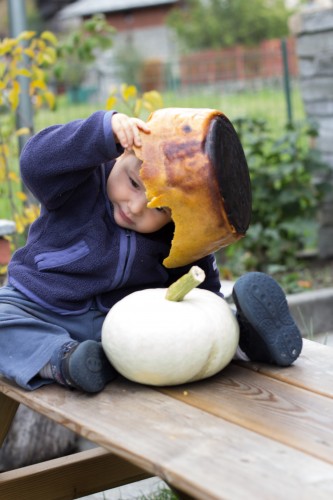

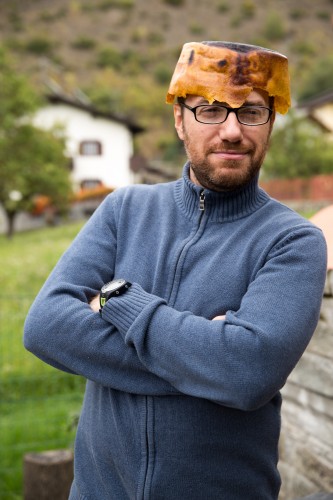
 In decades past, the dried polenta crust was often eaten for breakfast soaked in milk or coffee (for those who could afford it). Others would savor it soaked in strong red wine, or they’d give bits of the crust to children for a special treat. According to my neighbor Massimo, children go completely nuts over polenta crust crackers sprinkled with sugar. He told us this as he pulled his old cast iron pot off of a nail on the ceiling of his taverna, and insisted that we snack on the two week old polenta crust. It was delicious.
In decades past, the dried polenta crust was often eaten for breakfast soaked in milk or coffee (for those who could afford it). Others would savor it soaked in strong red wine, or they’d give bits of the crust to children for a special treat. According to my neighbor Massimo, children go completely nuts over polenta crust crackers sprinkled with sugar. He told us this as he pulled his old cast iron pot off of a nail on the ceiling of his taverna, and insisted that we snack on the two week old polenta crust. It was delicious.
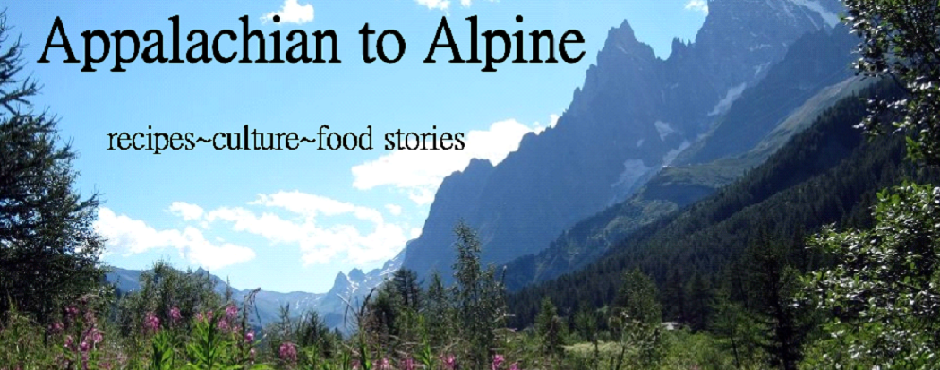
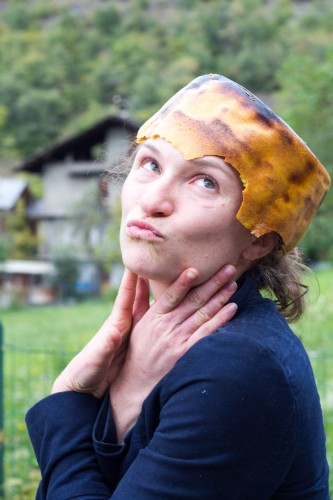
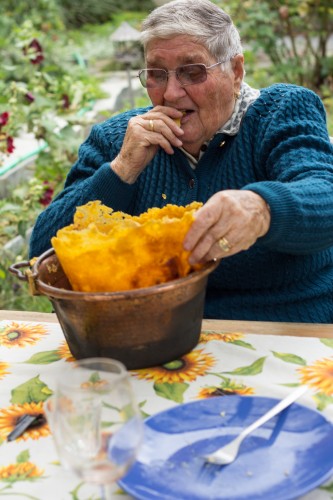
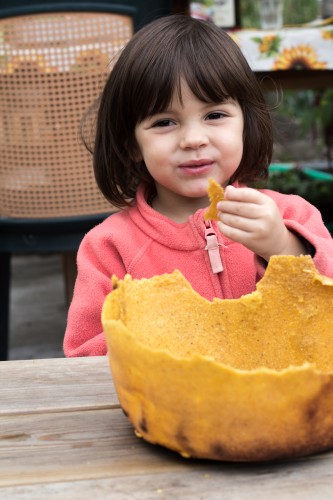




Fatal error: Uncaught Error: Call to undefined function ereg() in /home/logcabincooking/public_html/appalachiantoalpine.com/wp-content/themes/canvas/includes/theme-comments.php:63 Stack trace: #0 /home/logcabincooking/public_html/appalachiantoalpine.com/wp-content/themes/canvas/includes/theme-comments.php(19): the_commenter_link() #1 /home/logcabincooking/public_html/appalachiantoalpine.com/wp-includes/class-walker-comment.php(174): custom_comment(Object(WP_Comment), Array, 1) #2 /home/logcabincooking/public_html/appalachiantoalpine.com/wp-includes/class-wp-walker.php(145): Walker_Comment->start_el('', Object(WP_Comment), 1, Array) #3 /home/logcabincooking/public_html/appalachiantoalpine.com/wp-includes/class-walker-comment.php(135): Walker->display_element(Object(WP_Comment), Array, '5', 0, Array, '') #4 /home/logcabincooking/public_html/appalachiantoalpine.com/wp-includes/class-wp-walker.php(370): Walker_Comment->display_element(Object(WP_Comment), Array, '5', 0, Array, '') #5 /home/logcabincooking/public_html/appalachi in /home/logcabincooking/public_html/appalachiantoalpine.com/wp-content/themes/canvas/includes/theme-comments.php on line 63